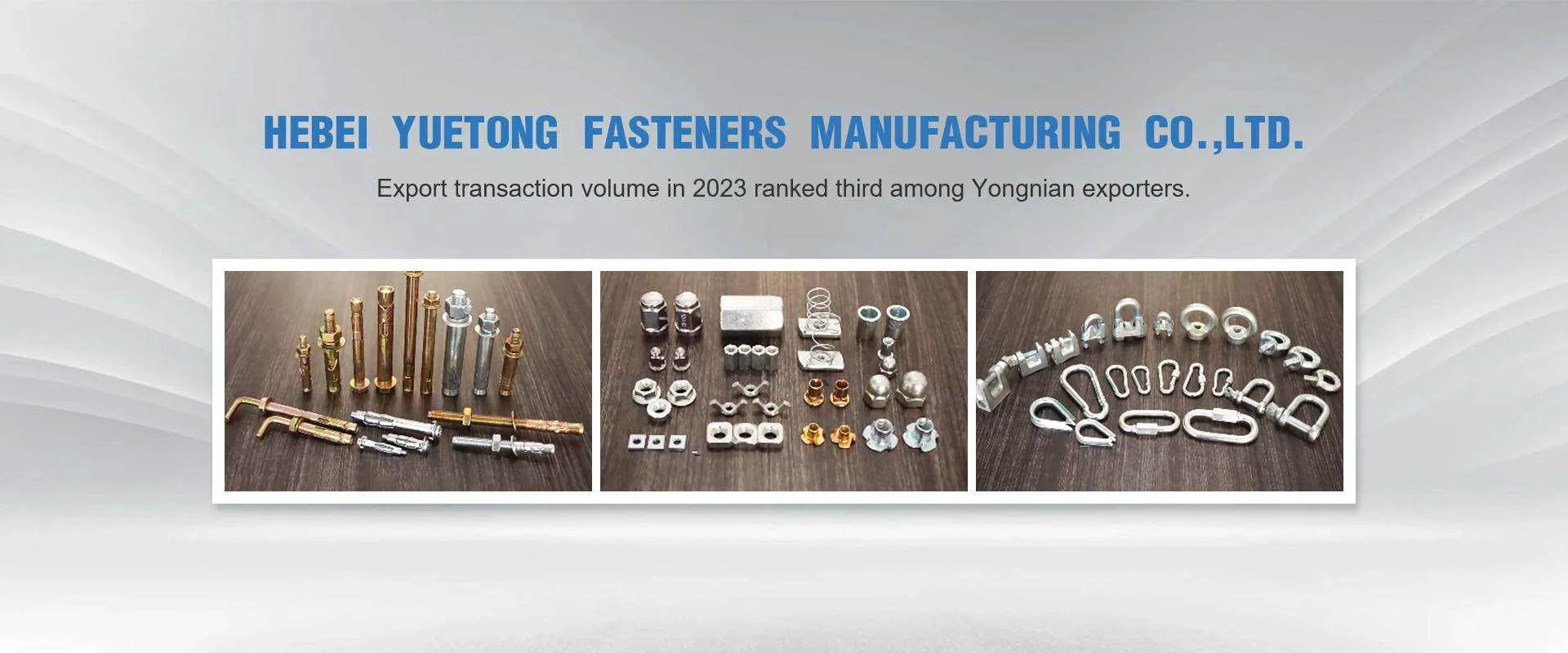Lis . 24, 2024 09:00 Back to list
300mm anchor bolts
Understanding 300mm Anchor Bolts Applications, Types, and Best Practices
Anchor bolts are critical components in construction and engineering, providing the necessary hold to secure structures to their foundations. Among the various sizes and types available, 300mm anchor bolts are noteworthy for their versatility and effectiveness in a wide range of applications. This article aims to shed light on the significance of 300mm anchor bolts, their applications, types, and best practices for their installation and maintenance.
What are Anchor Bolts?
Anchor bolts are a type of fastener used to attach structural elements to concrete. They are primarily employed to connect structural steel to concrete foundations. These bolts come in various sizes, lengths, and grades, each designed to support specific loads and conditions. The 300mm (approximately 11.8 inches) length is particularly popular for various construction projects, including buildings, bridges, and towers.
Key Applications of 300mm Anchor Bolts
1. Building Foundations In multi-story buildings, 300mm anchor bolts are often used to secure steel columns to the concrete foundation. This guarantees stability and load distribution throughout the structure.
2. Industrial Applications Factories and warehouses utilize 300mm anchor bolts to secure heavy machinery and equipment to their floors. This prevents any movement during operation, ensuring both safety and efficiency.
3. Bridges and Overpasses These anchor bolts play a vital role in fastening the structural components of bridges and overpasses to their foundations, providing essential strength to withstand traffic loads and environmental stresses.
4. Wind Turbines In renewable energy sectors, 300mm anchor bolts are used to secure wind turbine bases to ensure stability against high winds and outdoor elements.
Types of Anchor Bolts
Anchor bolts can be categorized into various types based on their design and application
1. Cast-in-Place Anchor Bolts These are embedded in concrete during the pouring phase. They provide excellent bonding and are often used for heavy-duty applications.
2. Post-Installed Anchor Bolts These are installed after the concrete has cured. They are typically used when retrofitting or when cast-in-place options are not feasible.
300mm anchor bolts

3. L-Shaped Anchor Bolts These come with a bent end, which helps in providing better anchorage within the concrete.
4. J-Bolts Characterized by their ‘J’ shape, these bolts are ideal for different types of anchoring within construction projects.
Choosing the Right 300mm Anchor Bolt
Selecting the appropriate anchor bolt is crucial for ensuring structural integrity. Factors to consider include
- Load Capacity Understand the type of loads the anchor bolts will be subjected to, including tension, shear, and moment forces. - Environmental Conditions Corrosion-resistant materials such as stainless steel or galvanized steel are preferable in environments prone to dampness or exposure to chemicals. - Concrete Strength The grade of concrete used in the project impacts the size and type of anchor bolt required.
Best Practices for Installation and Maintenance
1. Correct Placement Follow the manufacturer’s guidelines to ensure proper placement of anchor bolts. Incorrect positioning can lead to structural failures.
2. Regular Inspections Periodically inspect anchor bolts for signs of wear, corrosion, or loosening. Early detection of issues can prevent catastrophic failures.
3. Proper Torque Ensure that bolts are torqued to the manufacturer’s specifications. Inadequate or excessive torque can compromise the integrity of the connections.
4. Use of Spacers or Washers Implementing spacers or washers can help distribute loads more evenly and protect the concrete surface.
Conclusion
300mm anchor bolts are indispensable in modern construction, providing the stability and strength needed for various structural applications. Understanding their types, applications, and best practices for installation can significantly enhance the durability and safety of constructions. By choosing the right anchor bolts and ensuring they are properly installed and maintained, engineers and builders can achieve lasting structural integrity that withstands the test of time.
-
Threaded Rods in Art Where Structural Integrity Meets Aesthetic Vision
NewsApr.11,2025
-
Optimize Industrial Fastening with Precision-Crafted Hex Nut Solutions
NewsApr.11,2025
-
Master Fastening with Premium Stainless Steel Carriage Bolts
NewsApr.11,2025
-
Hex Sleeve Anchors: Smart Choice for Industrial-Grade Concrete Fastening
NewsApr.11,2025
-
Hex Head Timber Screws: Reinventing Safety in Modern Livestock Enclosures
NewsApr.11,2025
-
Elevate Efficiency with Robust Beam Clamps
NewsApr.11,2025


